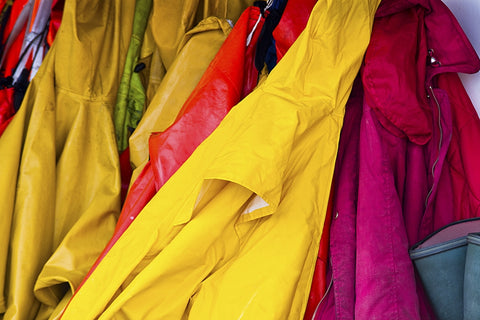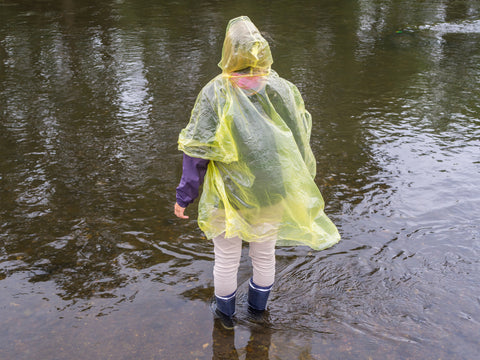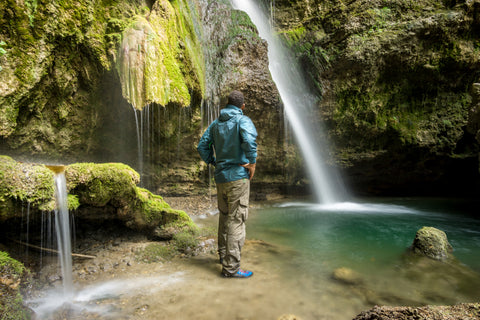Poncho vs. Rain Jacket: What's the Best Way to Stay Dry on the Trail?
The poncho vs. rain jacket debate has been going on for quite some time, and trail-runners, hikers, backpackers, and fisherman all have a stake in the answer. The best way to approach this dilemma is to look at your activity of choice, the likely weather, and your tolerance of packing and lugging gear. True to form, though, the poncho vs. rain jacket is a debate that will never fully be put to rest.
The poncho may be the old-school choice for easy-access waterproof gear, but there are merits to rain jackets that users may want to consider as you figure out how to stay dry while camping or hiking in wet weather.
Poncho vs. Rain Jacket: Key Differences

Since a poncho is a single plastic (or breathable) cover, it resembles a tarp with hood. Every poncho is like every other one and they work to keep the cold away as well as the rain, although modern American ponchos are built mainly for rain. The traditional poncho can act as ground cover, pillow, backpack cover, and survival insulating blanket—among other uses.
Rain jackets, by contrast, are form fitting, often hooded jackets, made from specific materials to resist water. They have specialized interior pockets, zipping front pockets, and removable or storable hood set-ups: all to seal you in and the rain out. Rain jackets are similar in design to the standard “windbreaker” but are sturdier, sometimes providing removable liners.
When Ponchos Work Better

Since ponchos are easily storable, they are great for spur-of-the-moment weather conditions. Going on a jungle kayak trip? Take a rain poncho, because they can handle downpours, drizzles, and errant river waves and cover more of your body. The second plus for poncho wearers is the ability to pack it light, roll it up, and never worry about missing parts of having to disassemble it. Rain ponchos scrunch down to nearly nothing in a backpack.
For long backpack trips, long river trips, and overnight cycling trips, the poncho vs. rain jacket debate ends on the side of the rain jacket, but for daily use and a quick fix in a wet situation, the poncho wins out. They take up less room, can be used as ground covers, can be used as blankets for extra insulation, and can even be used as a temporary shade structure!
A perfectly serviceable poncho has one other charming quality: they are dirt cheap.
When to Go with a Rain Jacket

Rain jackets are ideal for long trips in stormy weather in which packing and unpacking is not an issue. For example, long boating trips where you can be certain it will be rainy or misty. When considering a poncho vs. rain jacket, buyers often go with the latter because they can choose an insulating jacket (potentially with a removable lining) that protects against the rain and the cold.
Rain jackets like the Rebel Stretch are also superior for day hiking, since packing is minimal, especially if the hike is going to be in colder conditions, because there are removable layers and pockets.
Because the poncho vs. rain jacket debate isn’t cut-and-dry, anyone trying to decide should consider the one big downside of rain ponchos: they don’t breathe well and can become stifling in hot, humid conditions. But as a go-to, back-up, and permanent fixture, a poncho should rest snugly in the bottom of your daypack.
The bottom line is that If you are into lightweight travel and worst-case-scenario outdoors adventures, a poncho is a great piece of gear to have on-hand. But If you love pockets, features, and specialized gear—find the perfect rain jacket for your outdoor passions. Or, if you can spring for it and have plenty of storage space, go for both and use the right one for the conditions at hand.
